By now, traders are no doubt aware that there is a major dichotomy occurring in today's stock market.
2013's big winners are suddenly 2014's misery positions. Mo-mo has become a no-no. And many of the former leaders have been beaten unmercifully over the last two months.
Traders have probably seen the charts before, but again, a picture is worth a thousand words. So let's review what has been happening in the momentum names lately.
First there is social media. You know, companies that most of the over-40 crowd has never heard of, like Twitter TWTR, LinkedIn LNKD, Yelp YELP, etc.
See also: 10 Bear Market Catalysts To Be On The Lookout For...
The bottom line is that while these names were all the rage in 2013, suddenly it isn't too cool to be invested in this space.
Global X Social Media SOCL Daily
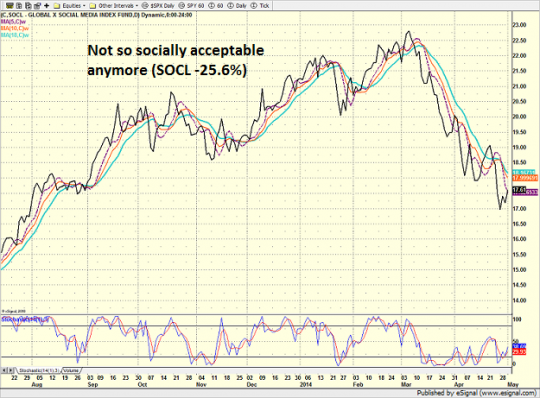
While the damage is not nearly as severe, the once-hot internet stocks have also come back down to earth in a rather swift fashion. And although the decline of -18.3 percent isn't an abject disaster, these stocks have clearly lost their mo-mo mojo.
First Trust Internet FDN Daily
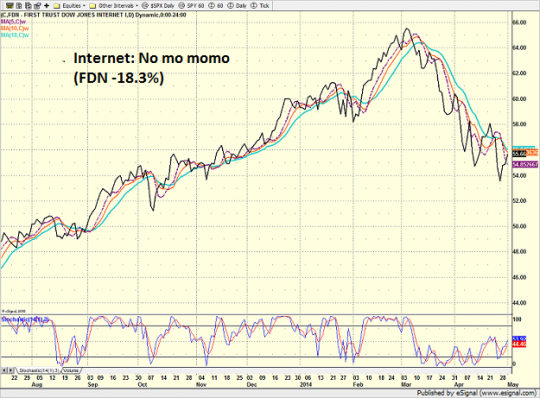
Then there is Biotech.
Once the darling of nearly every hedge fund and fast-money trader's portfolio, this chart is the poster child for why ALL investors simply MUST have an EXIT STRATEGY for each and every position they own.
Biotech XBI Daily
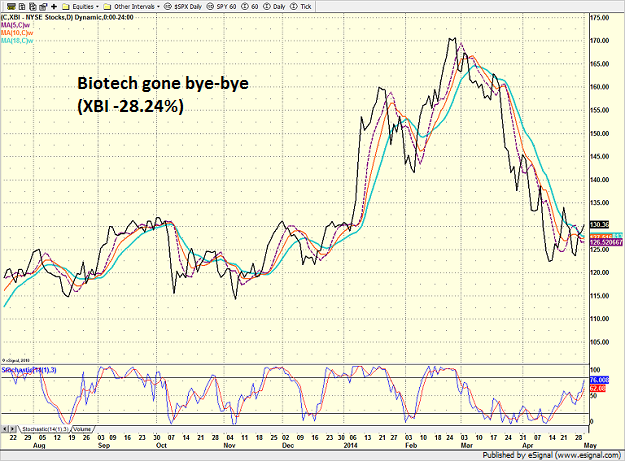
And yet, the blue chip indices have been doin' just fine, thank you.
In fact, the large-cap indices don't seem to give a hoot about the devastation taking place in so many of the former high fliers.
Take a gander at the chart below of the S&P 500. Now quickly compare the trend of the S&P over last few months to the charts above.
S&P 500 SPY Daily
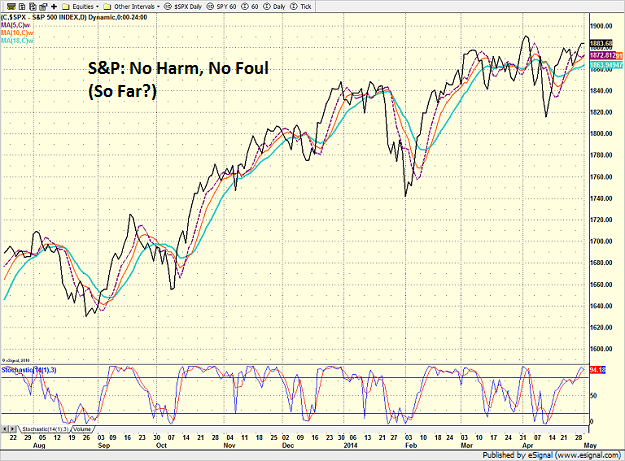
Now, for all you hot-money traders out there, take a look at the next chart.
While trucking and airlines and package delivery companies aren't exactly sexy, they DO seem to be working right about now.
Seriously, ask yourself, would you rather own Southwest Airlines LUV or Twitter TWTR here?
DJ Transports Daily
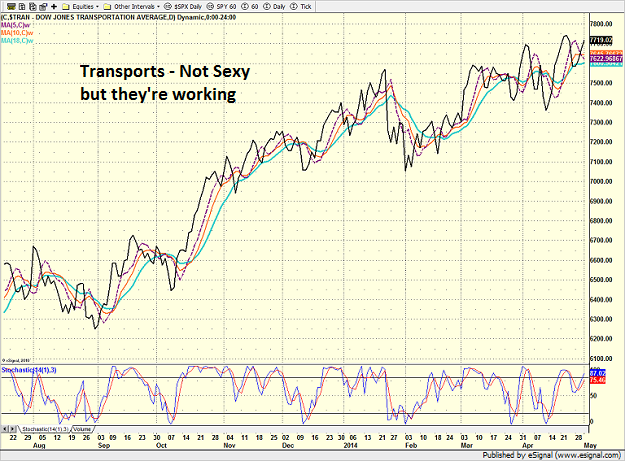
Speaking of momentum plays, the fast-money always loves a good rotation play.
So, where are these players investing in now, you ask?
Yep, that's right, utilities.
Utilities Select Sector SPDR XLU Daily
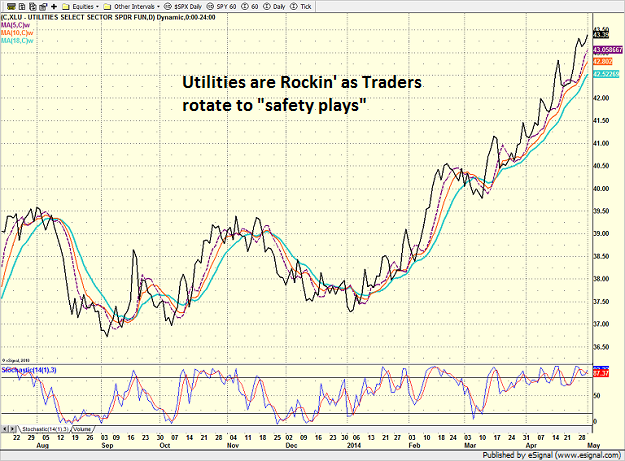
Suddenly big and boring is beautiful.
Suddenly earnings matter.
Suddenly valuation metrics are getting noticed.
And suddenly, investing in social media isn't so socially acceptable any more.
The Big Q: Can The Market Survive the Mo-Mo Meltdown?
The question on everyone's mind - and the reason the review of the next five potential bear catalysts got put off again Friday - is can the broad market continue to simply ignore the momentum meltdown?
See also: Can The Blue Chips Continue Moving Up With All Of This Destruction?
Those in the bear camp contend that the Dow and S&P simply can't hold up forever if the mo-mo names continue to be crushed. And history shows that momentum meltdowns tend to persist for at least a couple more months.
As such, doesn't it make sense to "Sell in May and go away?"
Have We Seen This Movie Before?
The answer to the question posed above is, yes, traders have indeed seen this movie before. In fact, since 1982 there have been five instances in which the high momentum stocks have sold off by at least 12 percent while the S&P declined less than four percent.
In 1983, the mo-mo names (defined at the top 10 percent of stocks based on 52-week rate of change) dove while the S&P held up. It is interesting to note that in this case, the S&P actually rallied more than five percent to a new high in between the initial crack in the momentum names and the ultimate 35.7 percent decline. The interesting thing is the S&P only dropped a total of 12.7 percent during the entire year-long mo-mo wipeout.
In 1997, while the momentum stocks fell 22 percent into the end of the year (literally), the S&P consolidated sideways and then proceeded to rally more than 25 percent.
In 2004, the mo-mo stocks fell 21 percent over 31 weeks while the S&P dropped only eight percent.
In 2006, the hot stocks were tagged for a loss of 23 percent over four months while the S&P fell less than seven percent. And then currently, the momentum names have fallen, on average 12.5 percent while the S&P has dropped a smidgen over three percent.
What To Expect Next
Putting all of these instances together a pattern appears. IF (note the use of capital letters) the S&P can continue to hold up in the face of the momentum sell off, the S&P typically consolidates from anywhere from two to four months before heading higher.
That's the good news.
The bad news is investors may be facing several more months of the up-and-down, back-and-forth action that has been in place since the beginning of March. Joy.
Positions in stocks mentioned: SPY
© 2024 Benzinga.com. Benzinga does not provide investment advice. All rights reserved.
Comments
Trade confidently with insights and alerts from analyst ratings, free reports and breaking news that affects the stocks you care about.